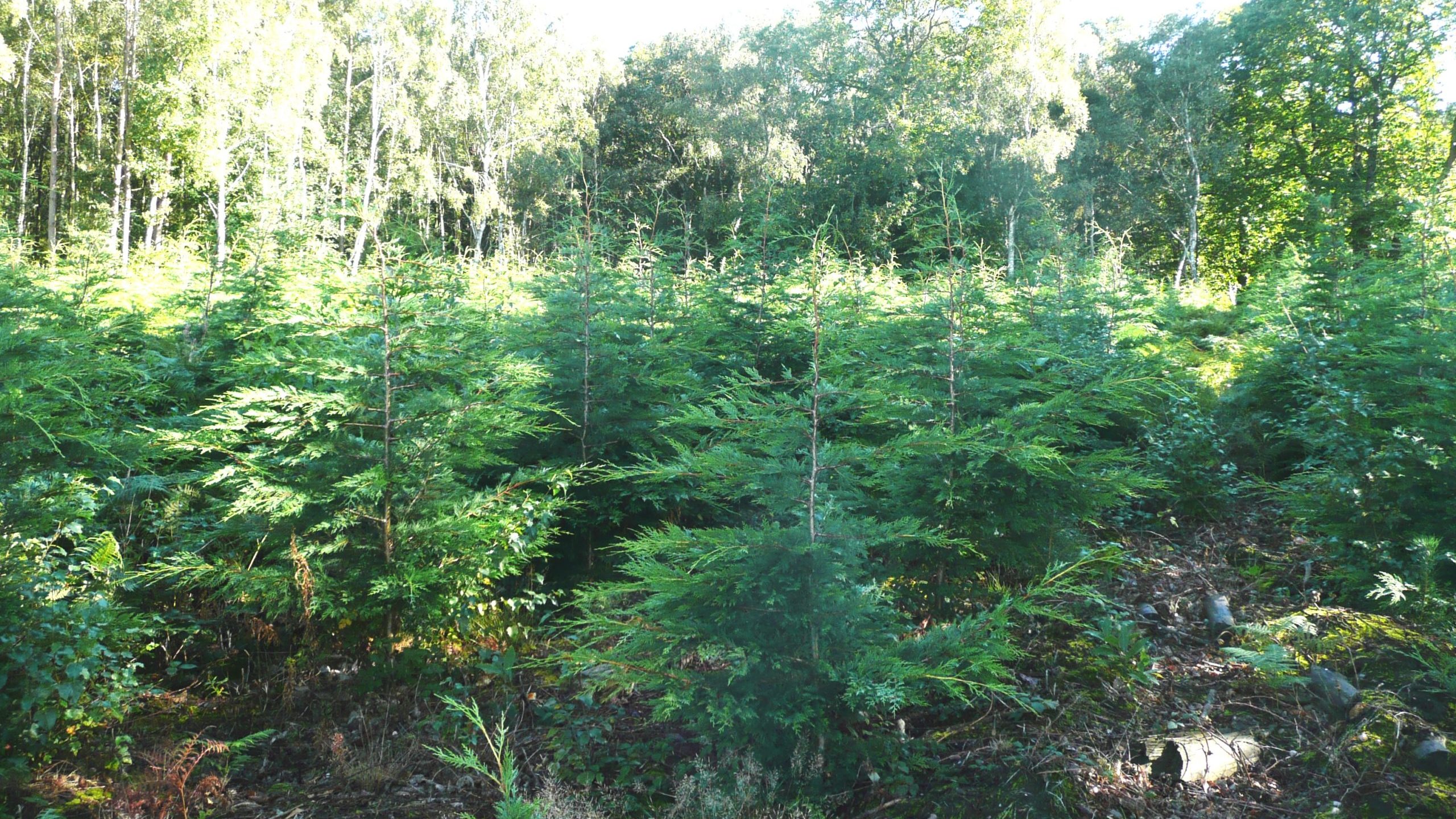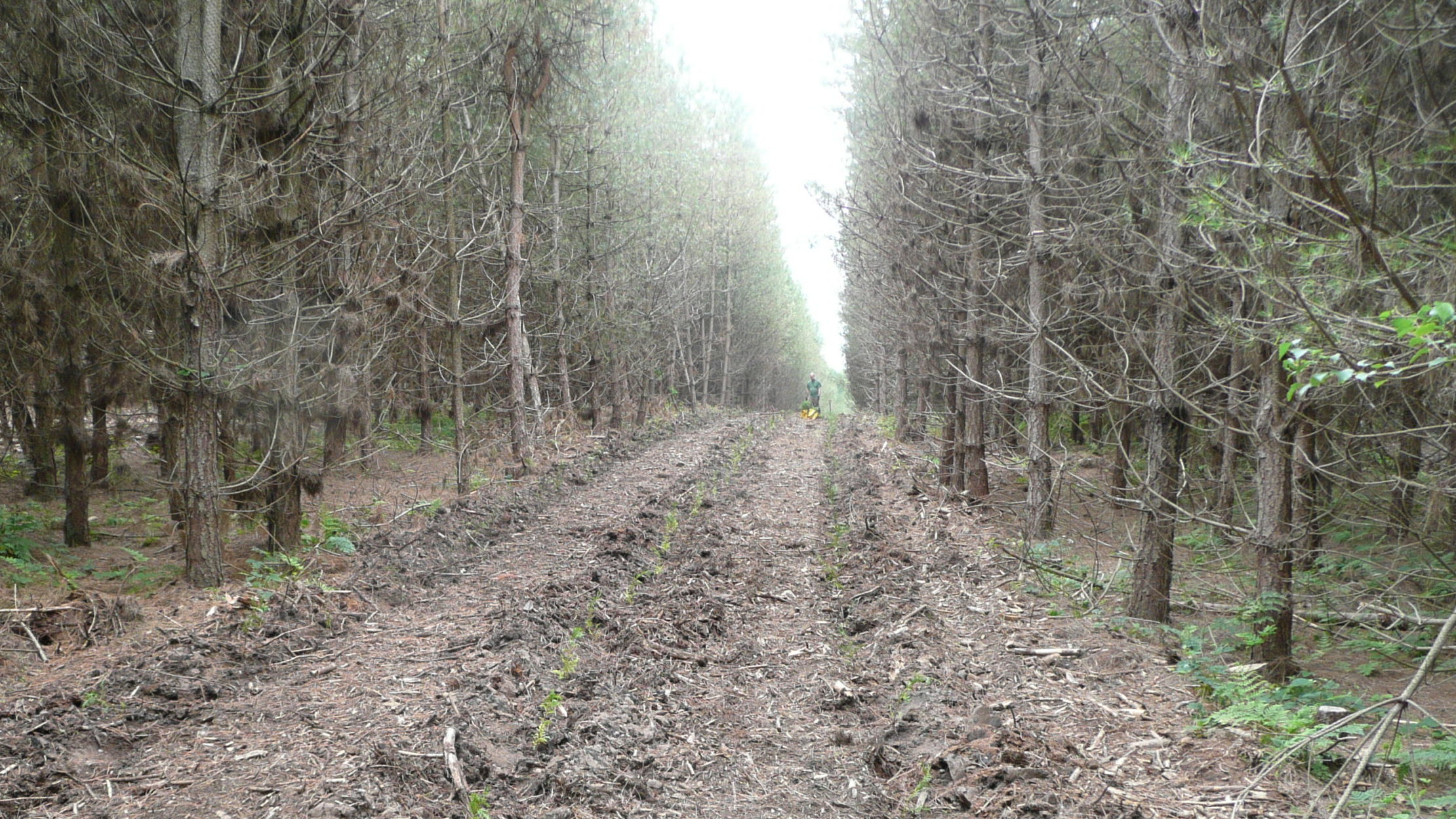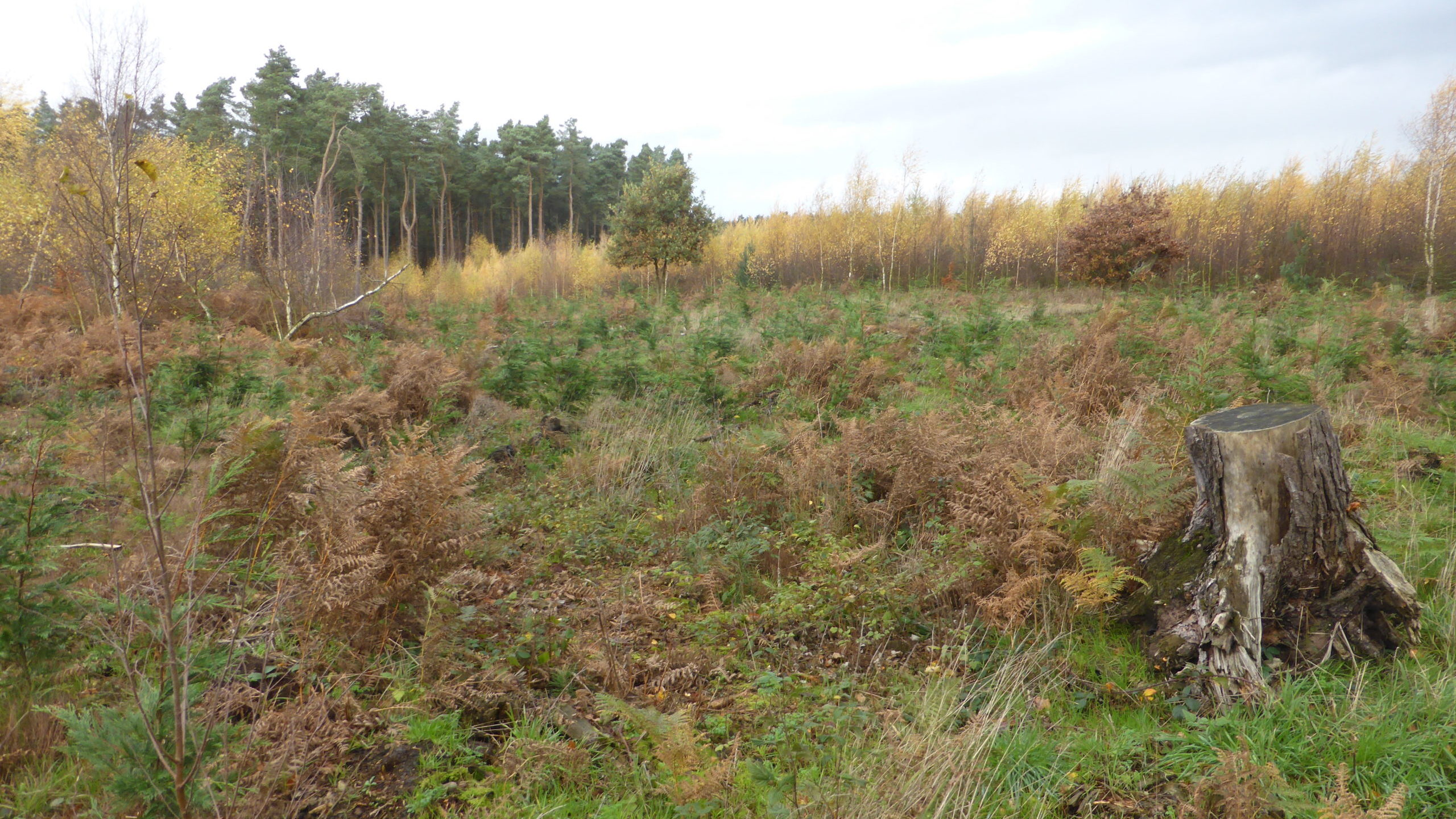Resilient Woods Fast Plant Model in Nottinghamshire
The overarching management aim is to achieve the maximum sustainable level of timber production consistent with environmental and social objectives whilst developing more economically, ecologically and socially resilient forests.

Carburton and Clumber, owned by Forestry Commission England, Central England Forest District
Gold Award: Excellence in Forestry 2017
This 176 ha site near Worksop, Nottinghamshire, lies on the freely draining and acidic sands of Sherwood. The overarching management aim is to achieve the maximum sustainable level of timber production consistent with environmental and social objectives whilst developing more economically, ecologically and socially resilient forests. Within the forest, there is a well-used cycle route and provision for informal public access where leasehold constraints allow. Central England Forest District also has a project partnership with Nottinghamshire Wildlife Trust to provide habitats for priority bird species through high quality and sustainable commercial silviculture.
Developing Resilience
Carburton and Clumber has a high proportion of Corsican pine. The decline in growth rates in plantations of this species, following infection with Dothistroma pini, provided the stimulus to diversify both the species composition and stand structure in an attempt to create more diverse, and therefore resilient, forests. The district believes this also creates more aesthetically pleasing landscapes and more ecologically complex and richer woodlands.
Alongside this, a long-running project to improve the growing stock inventory is now nearing completion and has provided the data required to make more accurate predictions of sustainably harvestable volumes. As a result, an increase in the annual harvesting programme has been achieved without compromising FSC/PEFC certification – an important contribution to developing a more resilient business model.
Alternative Silviculture and the Central England Fast Plant Model
Much of the ‘alternative silviculture’ is based around the underplanting of diseased Corsican pine stands with a range of successional conifer species, including Douglas fir, western red cedar, western hemlock, European silver fir and coast redwood. Using their Fast Plant Model, FC England Central England District aims to have a site planted within six weeks of the completion of thinning operations.
This means they can:
- Gain maximum advantage from weed-free conditions.
- Achieve successful establishment without the use of expensive chemical or mechanical weed control, thereby contributing significantly to the Chemical Reduction Strategy.
- Demonstrate a significant cost reduction by reducing the number of interventions during the establishment phase.
This Fast Plant Model is dependent on:
- Extending the planting season throughout the year, which is reliant on the use of cell-grown planting stock.
- Having local control of all ground preparation operations and plant availability. This has required investment in machinery and plant storage facilities.
Whilst minimising expenditure during the establishment phase continues to be important, all silvicultural decisions are now considered against investment, risk and return to ensure essential operations. For example, formative pruning is not neglected simply to reduce costs without considering its long-term consequences on timber value.
Birch regeneration has been used as a low-cost method of restocking, which acts as a soil improver, adds landscape and wildlife benefits and is being managed to produce millable quality logs on a relatively short rotation.
Accommodating Public Access
A heavily-used National Trust cycle route runs through part of the woods; here, clearfelling is done in strips at an angle to the path to reduce its visual impact and is very effective. The width of the strips are approximately the same as the height of the trees and have been replanted with Atlas cedar, Leyland cypress, western red cedar and Douglas fir.
Approximately one-third of the crop has been removed in this first felling, and the remainder will be removed in two further strip fellings at roughly ten-year intervals. Minimising the visual impact in this way is very important in this heavily visited area which is immediately adjacent to a very well used National Trust campsite.
Biodiversity
A rotational clearfell system based around birch regeneration supplemented with wild cherry planting on roadsides has been developed in partnership with the Nottinghamshire Wildlife Trust.
This provides transitional open space to meet the needs of traditional priority bird species such as woodlark, nightjar and tree pipit; but will also create significant areas of “scrub” habitat more suited to birds such as willow warbler and garden warbler, which are now experiencing significant national declines.
In addition, a proportion of retained old growth will provide nesting and foraging habitat for redstart and willow tit. Whilst helping to improve the conservation status of priority birds, this system will be self-funding by the production of birch and cherry sawlogs.
Marketing
Alongside the drive to increase the level of timber production, Central England Forest District is also seeking to improve the unit price and develop a degree of insulation against the timber cycle’s vagaries through more diverse and proactive marketing. A Timber Marketing Manager has been appointed and has already made a significant contribution to increasing both the volume and the value of timber coming to market as well as diversifying the range of customers and the products.
Conclusion
There is a strategic design plan covering the woods. The district maintains detailed coupe records that inform investment and future management decisions and provide a resource of research in the field.
The Excellence in Forestry judges commented that they hope this idea is taken up within the Forestry Commission and elsewhere.
For more information contact: Andrew.Powers@forestry.gsi.gov
(Andrew Powers, Head of Land Management, Forestry Commission – Central England)


Duke of Cornwall Catergory Sponsers:



